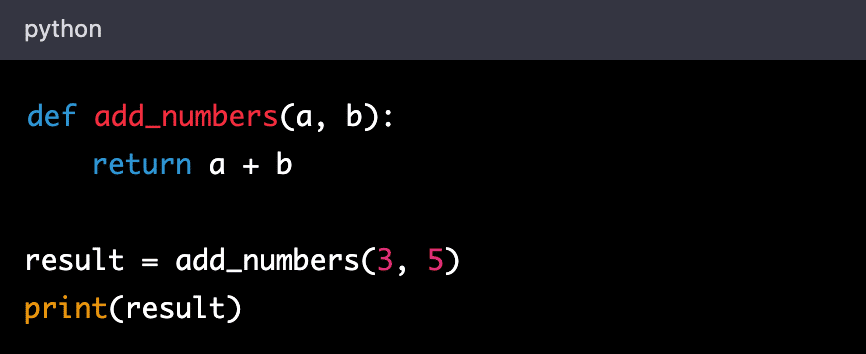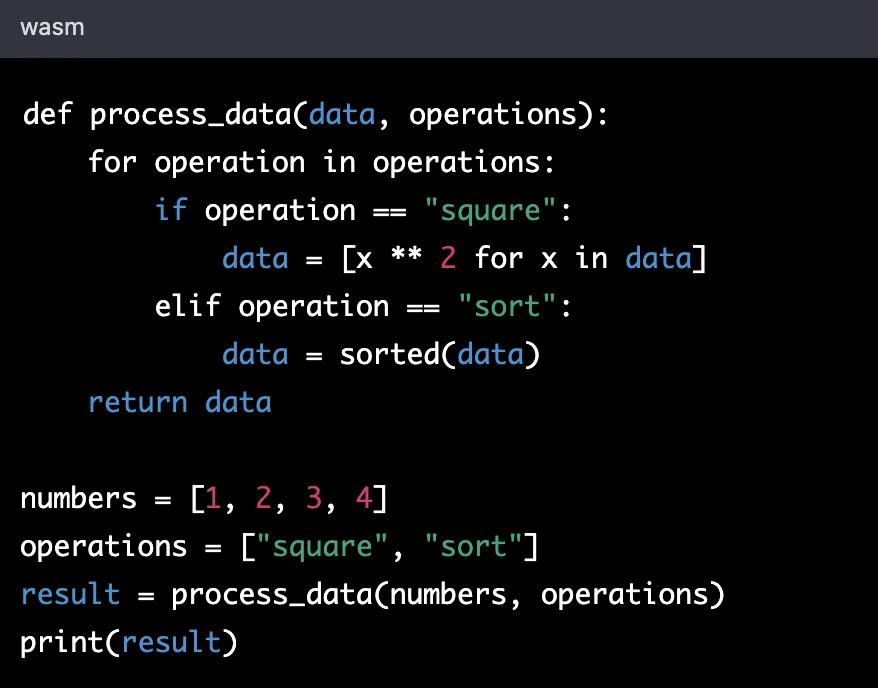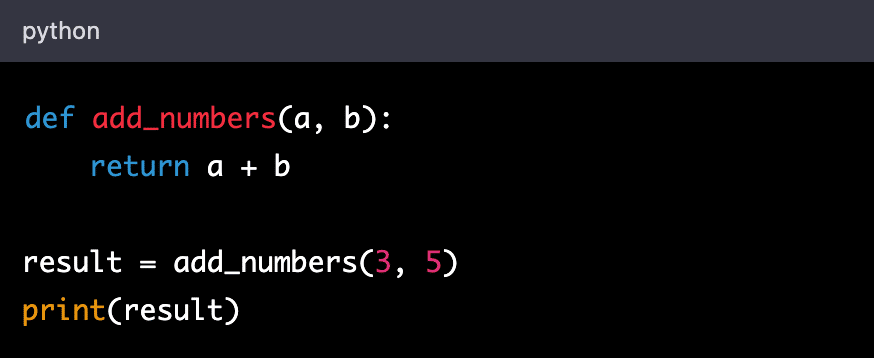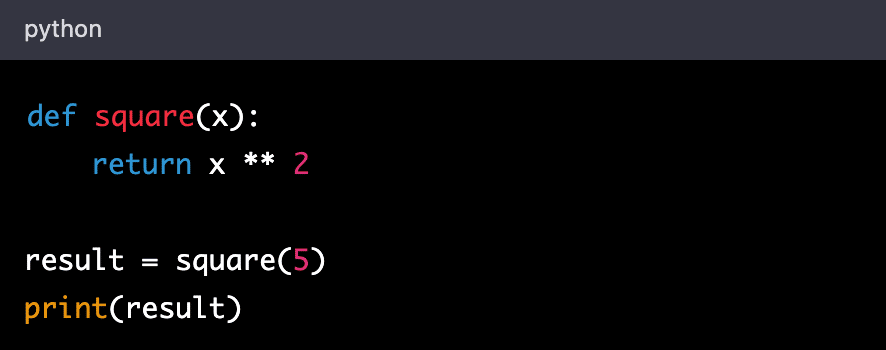Access all In Easy Steps books for just £5 a month
Menu
Access all In Easy Steps books for just £5 a month
Home A quick guide to Python functions (with examples)
February 7, 2023
Want to know how to call a function in Python?
Python is an incredibly versatile and powerful programming language used for many different tasks. One of the key elements of programming with Python is calling functions, which are lines of code that help a program carry out certain tasks.
Functions make code more efficient, organized and reusable. They can be used to build larger programs from smaller pieces of code.
In this In Easy Steps tutorial, you’ll learn all about how to call a function in Python with the help of lots of examples. Let’s dive in!
Functions in Python are defined using the \def\ keyword, followed by the function name, a set of parentheses that may contain parameters and a colon. The code inside the function is indented and the function definition is ended by a return statement.
Here is an example of a function definition in Python:

Functions can take zero or more parameters, which are values passed to the function when it is called. These parameters can be used within the function to perform calculations or other operations. Functions can also return values using the return statement, allowing the function to be used as part of expressions or within other functions.
Functions in Python can be called by their name, followed by a set of parentheses that may contain arguments. The arguments are values passed to the function when it is called, and are used within the function to perform calculations or other operations.
Here is an example of calling a function in Python:

Here’s another example of calling a function in Python, this time with a more complex example:

Arguments in Python are values passed to a function when it is called, used within the function to perform calculations or other operations.
Here’s an example of using arguments in a Python function:

To let a function return a value in Python, use the \return\ statement followed by the value to be returned. For example:

Functions can have multiple return statements, but typically only the first one encountered is executed, as the function terminates as soon as a return statement is executed.
I hope this tutorial helps you learn how to call a function in Python.
If you want to learn more, you can check out our full guide, Python.
We also have lots of other tutorials:
Happy coding 🙂
Our newsletters inform you of new and forthcoming titles, handy tips, and other updates and special offers. You can opt out anytime.
"*" indicates required fields
By Kieran IES
Share
In Easy Steps Ltd 16 Hamilton Terrace Holly Walk, Leamington Spa, Warwickshire, CV32 4LY, UK.
Join as a member and get access to all of our books in digital format for just one small monthly fee.
Copyright © 2024 In Easy Steps Ltd. All Rights Reserved.
Would you mind giving us your feedback or reason of cancelling the subscription?
"*" indicates required fields